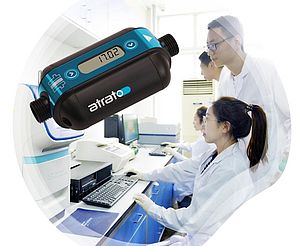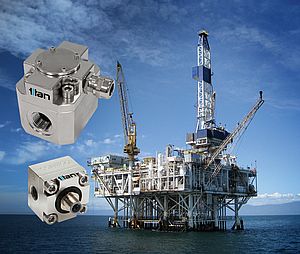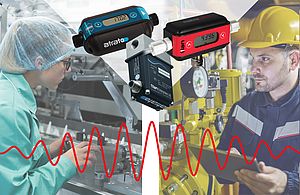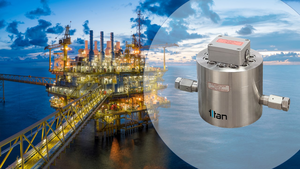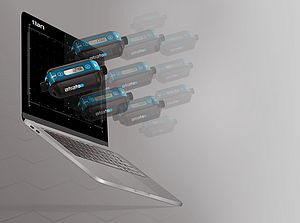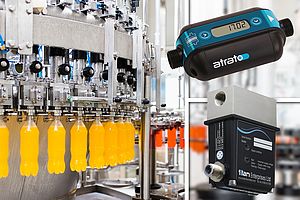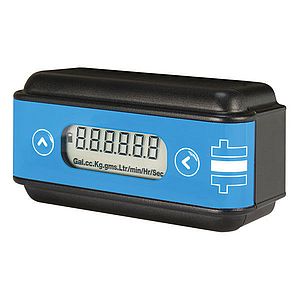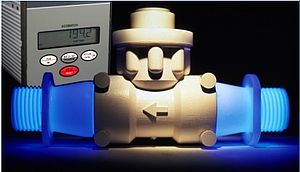Author: Trevor Forster, Managing Director of Titan Enterprises Ltd
For the successful transportation and refining of crude oils many types of additives are required, from simple surfactants through to complex blended scale and corrosion inhibitors. These are injected in small quantities at high pressure and are critical to the refining process. Careful monitoring of their addition is essential and this is best done with a flowmeter. Injection fluids vary in viscosity and density and any flowmeter installed into a plant should be able to cope with a range of physical and chemical properties. The choice of flow measurement solutions is still quite narrow with few technologies offering acceptable measurement solutions.
Traditionally positive displacement meters have been the flowmeter of choice for additive injection fluids. These meters are typically small with tight clearances between their moving components. Because of the tight manufacturing tolerances they are susceptible to contaminants inhibiting or stopping the meter. An inconvenience at the best of times but very expensive if the meter is installed sub-sea. Non-invasive flowmeters meters with no moving parts are the most desirable but are also traditionally the most expensive.
Rotary piston meters
Rotary piston meters use a cupped disc which "rotates" in a circular cavity. Each rotation displaces a known amount of fluid. Manufacturers take great care in choosing materials which have low coefficients of friction and limit the sliding areas. These techniques improve the flow meters linearity and extend the operating range. By definition these are typically low resolution meters. Rotary piston meters have a lot of sliding surfaces and are extremely sensitive to contamination and wear.
Spur Gear & Oval Gear Meters
These two types of gear meter operate in very different ways. A standard gear meter has few very large teeth which are meshed in a chamber with close clearances. The teeth form a seal along their length so the only leakage path is around the outside of the meshed cogs to the chamber walls. The pressure imbalance across the gears makes the gears rotate displacing a volume of fluid approximately equal to one gear tooth volume. Usually a sensor is used to count the passing of each tooth generating a high resolution output. The teeth in an Oval gear meter are still used to drive the gear and seal the central path but the differential force is developed by the shape of the ovals not the gear teeth on the lobe. By using an oval shape a much greater driving pressure can be generated resulting in a wider flow range and lower pressure drop compared to a standard gear meter. This also permits the meters to operate satisfactorily with lower viscosity fluids. The displaced volume is a product of the oval shape not the gear profile. The resolution is lower than the standard gear meter.
Helical meters
Helical flow meters use a pair of helical gears rather like two Archimedes screws intermeshed. The two rotors are "meshed" along their length and synchronised using a pair of gears. As the fluid passes down the chamber it rotates the screws. They are high resolution, accurate devices. They are however sensitive to contamination.
Thermal meters
Accurate low flow thermal meters use two or even three elements. One is used for reference, the second is a heat source and the third measures the heat dissipation and so the flow rate. These are mass flow devices and are capable of measuring very low flows The thermal characteristics of the liquid must be known for precise measurement.
Coriolis meters
Coriolis meters use the fact that if a tube full of moving fluid is vibrated it will cause a reaction to the fluids movement proportional to the mass of fluid flowing in the tube. These expensive meters are sensitive and will meter low flows with contaminants accurately.
Ultrasonic meters
Straight through, high pressure ultrasonic meters have yet to join the armoury of petrochemical low flow metering in any appreciable way but such products are under development. Ultrasonic flow meters offer a promising prospect as their manufacturing costs should permit a lower installed cost than the Coriolis meters.
Conclusions
Each flow metering technology has its own strengths and weaknesses and a choice will depend on financial constraints and personal experience. I believe future developments in ultrasonic metering will bridge the gap with an acceptable performance and price. They will be a welcome addition to the low flow metering armoury.





